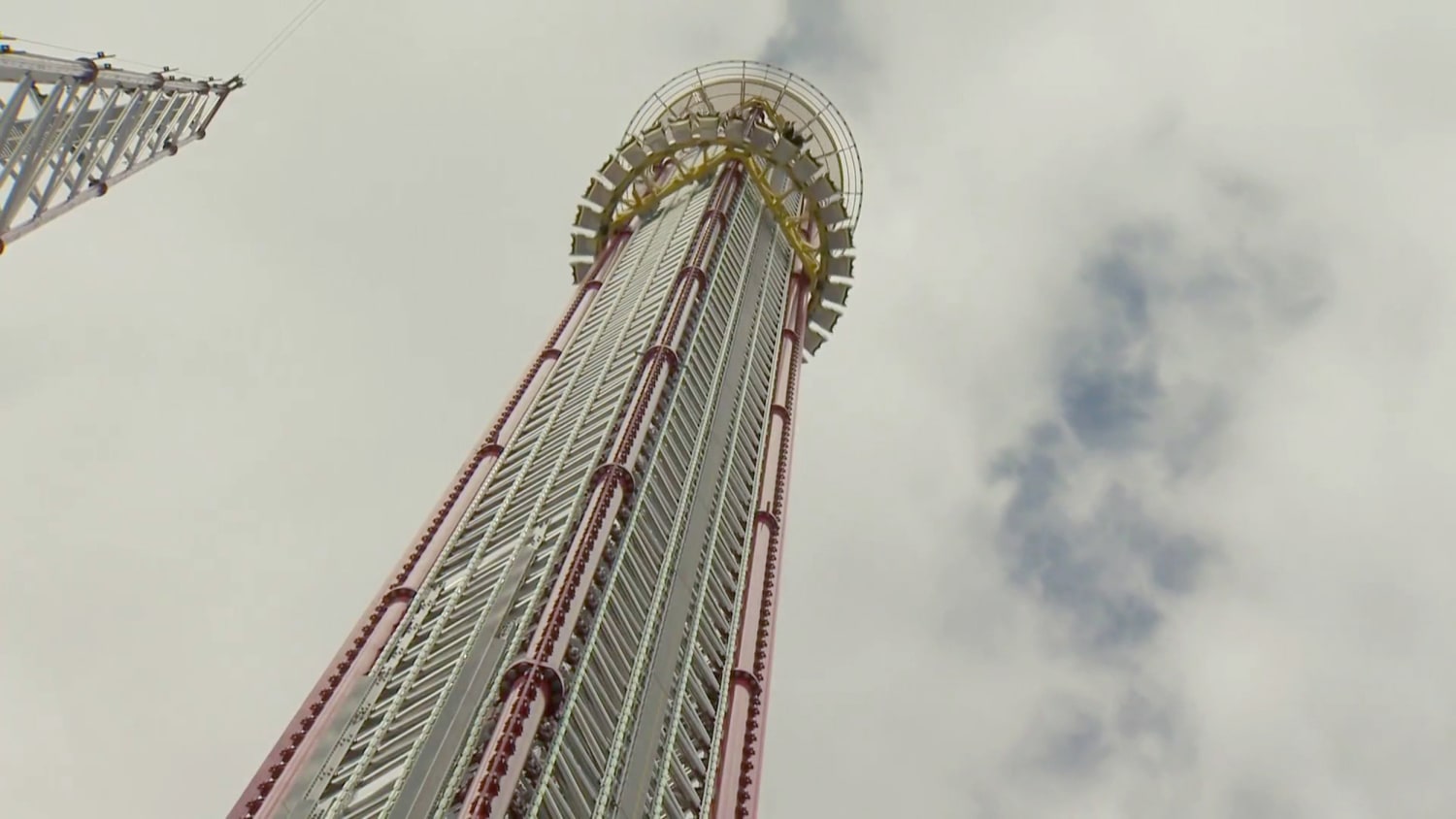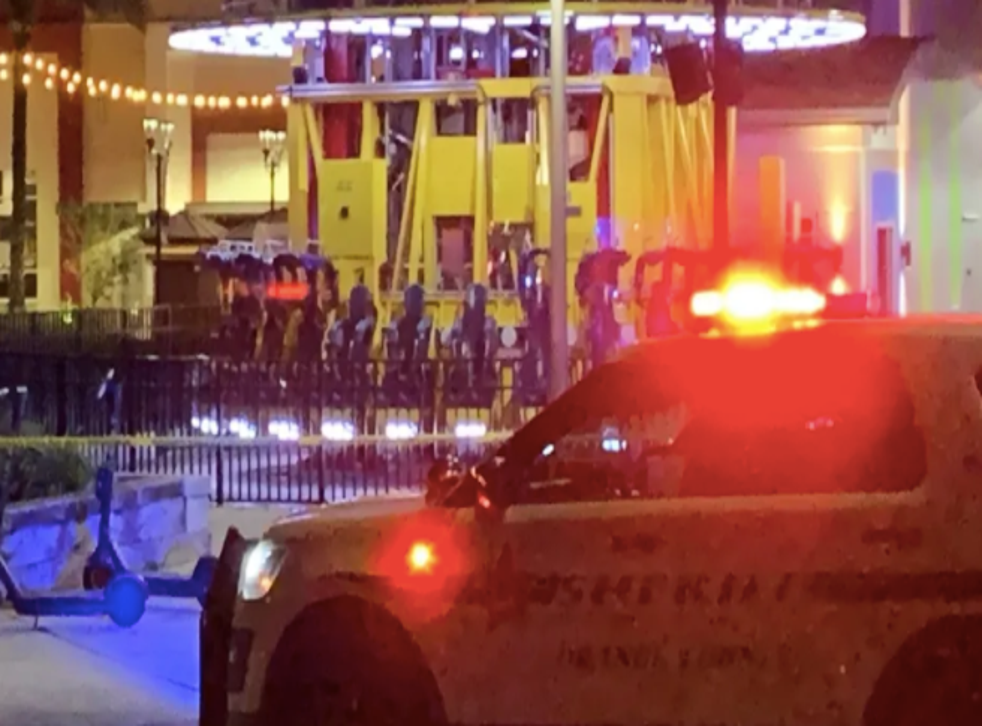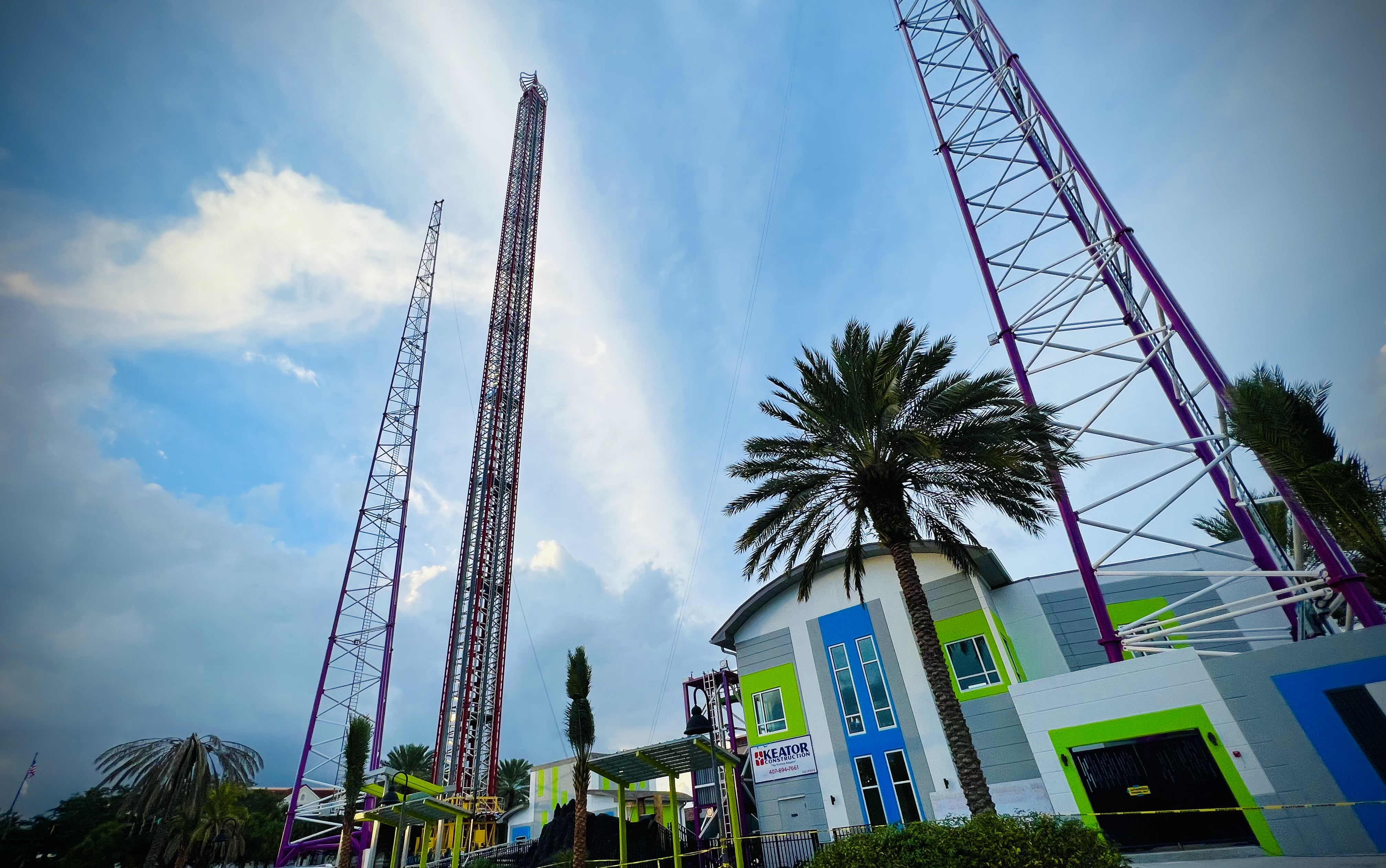The safety harness on the seat of a 14-year-old teen who fell to his death at the last week was still locked when the ended, according to the official accident report obtained by USA Today.

Credit: TODAY
fell from the when he and other riders were hundreds of feet above the ground, and according to the preliminary accident report, he fell when magnets on the engaged in order to slow down the as riders came down the tower toward the ground.
Ken Martin, a Virginia-based independent safety inspector and safety analyst says the operator’s manual for the at on in Orlando seems to lay responsibility for the accident that took the life of 14-year-old at the feet of both the manufacturer and the operator at .
Credit: CNN
“I don’t understand why there are failures on multiple levels,” Martin explained. “Failures at the manufacturer’s level, failure at the owner-operator level.”
was in Orlando on spring break from St. Louis, Missouri, and went to with friends on Thursday evening. He and his friends boarded the at , each one taking a seat on the . But only minutes later, Sampson had fallen hundreds of feet, from his seat on the to the ground below. He was transported to the hospital where he succumbed to his injuries.
‘s had only been open for three months when died. It was inspected and opened in December 2021, along with two other thrill rides at the Orlando .
Sampson’s and death resulted in a full-scale investigation by both the Sheriff’s Office and the of Agriculture and Consumer Services, the governing body in Florida which is responsible for the inspection of rides at amusement parks that employ fewer than 1,000 people. (Larger theme parks like Walt Disney World Resort, Universal Studios Orlando, and Sea World Orlando are responsible for the inspection of their own rides and for the reporting of injuries on those rides.)

Credit: The Independent
On Monday, a safety expert shared strong feelings about the cause of ‘s and death. Bill Kitchen, President of U.S. Thrill Rides, says Sampson died as a result of operator error.
But according to the accident report and the latest information from the investigation, Sampson’s death wasn’t only related to the operator’s error. It was also related to a failure of the itself.
The accommodates up to 30 riders at a time. Riders are seated in a ring that moves up a tall tower to a height of more than 400 feet. The ring then tilts riders forward before dropping them into a toward the ground at a speed of 70 to 75 miles per hour.

Credit: Click Orlando
The operator’s manual for the states a maximum weight for riders, and Sampson was over the weight limit. One page of the manual describes limitations that pertain to “large people,” and warns the operator to “be careful when seeing if large guests fit into the seats.”
The manual further instructs the operator:
“Check that [riders] fit within the contours of the seat and the bracket fits properly. If this is not so, do not let this person .”
Ken Martin says no part of this tragedy was the fault of himself.
“This young man did nothing wrong,” Martin said. “It’s the owner operator’s responsibility to inform the rider what the requirements are.”
“The most spectacular thing that the industry has done lately is they put sample chairs outside the before you get into the queue line,” Martin explained during an interview. “Those model chairs are for you to sit down in and sit to see if you fit. If that chair existed at the entrance, that would be your first level of safety. It didn’t.”
Martin explained that the operator’s manual for the says it would be almost impossible to operate the if all of the safety lights on the operator’s computer screen weren’t green. A green light on the means that the restraint bars that go over riders’ heads and shoulders are locked down.
He also said that the preliminary accident report indicates that when the stopped on Thursday evening, the restraint bar over ‘s seat was still locked down in place, despite the fact that Sampson was no longer in the seat. The report states the safety harness was “still in a down and locked position when the stopped.” It also lists three employees as witnesses.
“The safety bar has multiple positions,” said Martin. “And one of two things happened: the rider was able to lock it in the first position or the rider was able to hold the bar down across his chest.”
According to Martin, was too big to on the . “A restraint system is not a one-size-fits-all,” he said.
Martin explained that the fact that the bar was down when the came to a stop doesn’t necessarily mean that it was engaged and working properly.
“I’ve seen people come out of lap bars that have been locked,” Martin shared.
According to Click Orlando, Ritchie Armstrong, CEO of the Slingshot Group, owner and operator of the and the at , issued a statement on Tuesday. It reads:
“We are heartbroken by the loss of and absolutely devastated for his family and loved ones. We have suspended the operations of the and the Slingshot at . We are fully cooperating with the authorities at the state and local levels who are investigating this tragic incident. We plan on providing additional information in the coming days, as we learn more.”
Credit: FOX35 Orlando
Riders and safety experts alike have questioned the absence of a secondary restraint, such as a safety belt. Ken Martin said that such secondary restraints are usually a standard component in similar rides. He said a secondary restraint could have been life-saving for

 Disney Dining Serving up the latest Disney Eats, Treats, News, and More!
Disney Dining Serving up the latest Disney Eats, Treats, News, and More!





